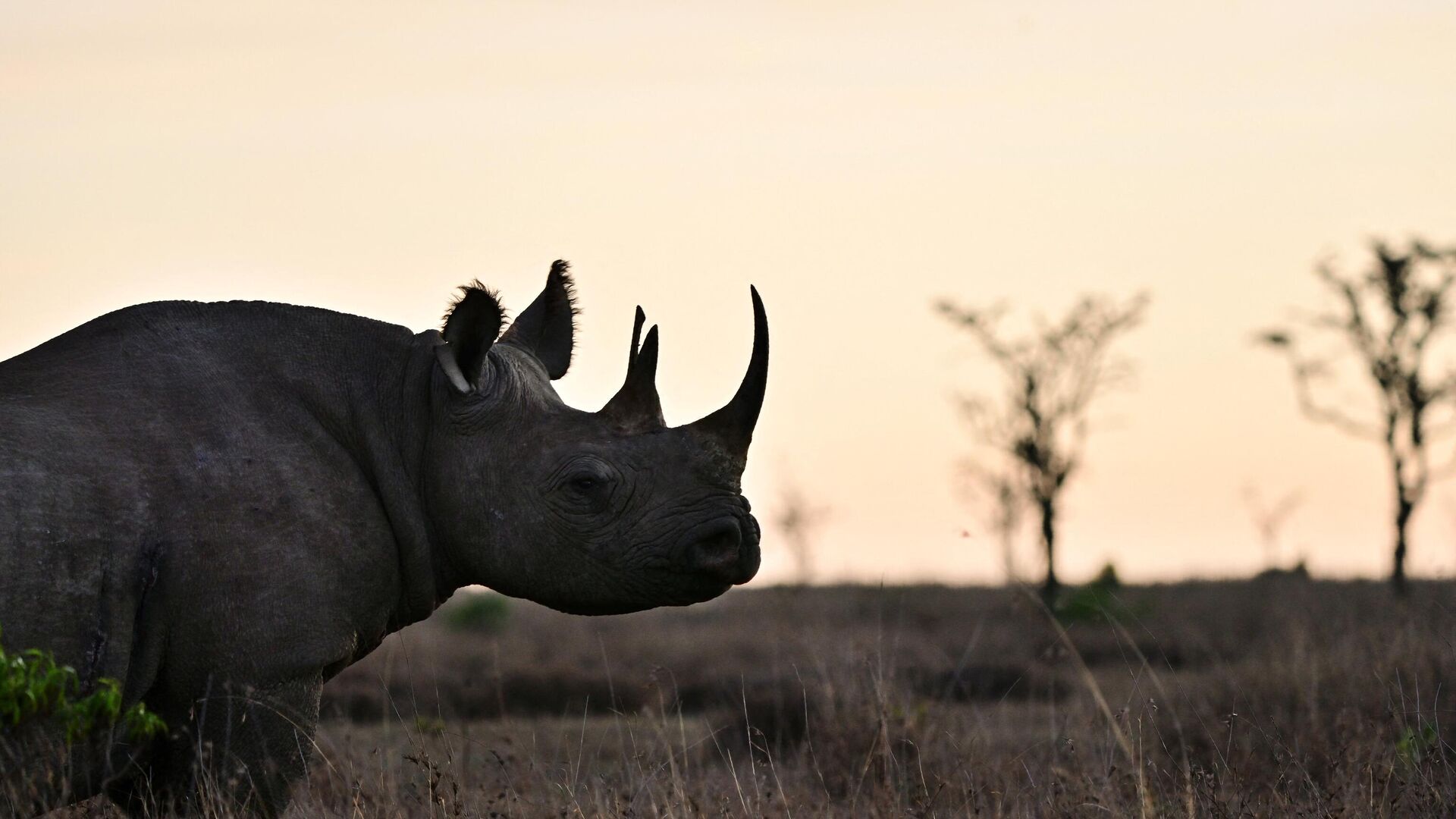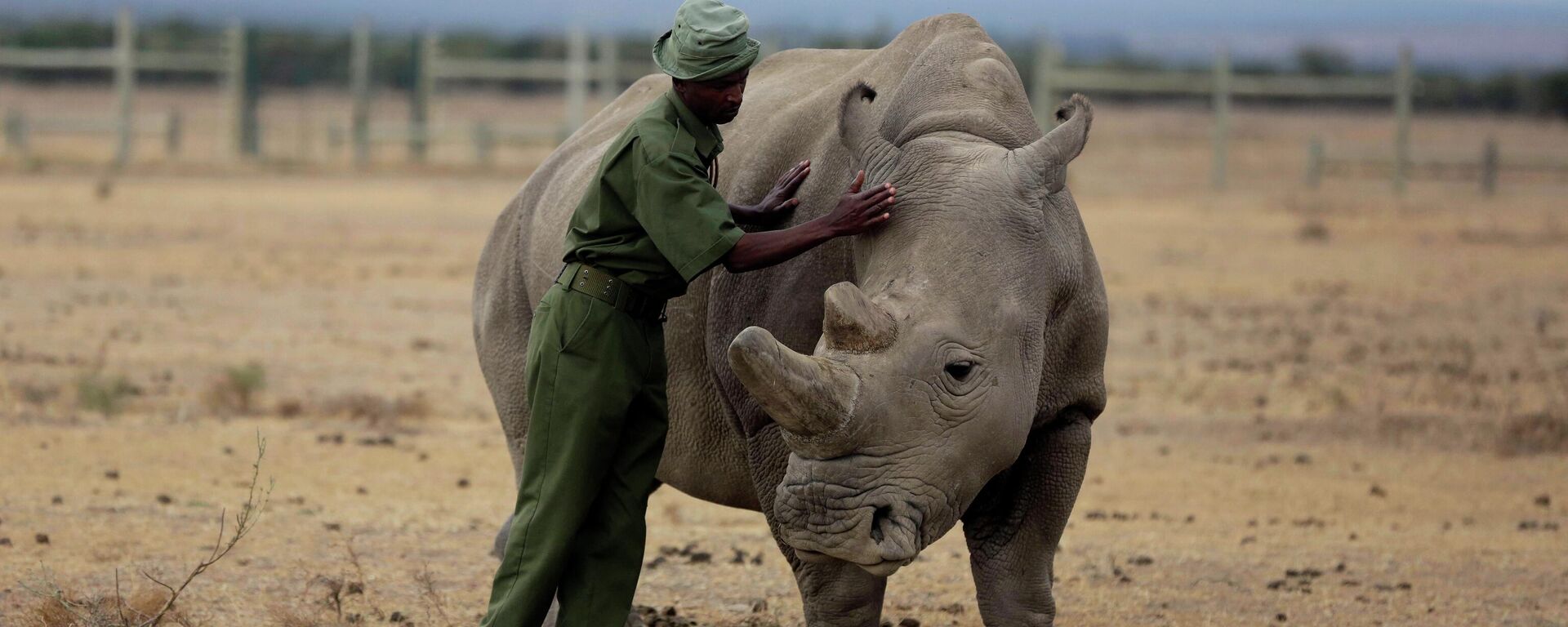https://en.sputniknews.africa/20240117/kenya-launches-relocation-of-21-endangered-black-rhinos-to-new-conservancy-for-breeding-1064659629.html
Kenya Launches Relocation of 21 Endangered Black Rhinos to New Conservancy for Breeding
Kenya Launches Relocation of 21 Endangered Black Rhinos to New Conservancy for Breeding
Sputnik Africa
Over the past three decades, Kenya's black rhino population has grown from 384 to more than 1,000, halfway to the Kenyan government's target of 2,000 by 2037... 17.01.2024, Sputnik Africa
2024-01-17T16:00+0100
2024-01-17T16:00+0100
2024-01-17T16:00+0100
kenya
rhino
east africa
sub-saharan africa
south africa
nature
nature reserve
endangered species
animals' protection
animals
https://cdn1.img.sputniknews.africa/img/07e8/01/11/1064659835_0:160:3072:1888_1920x0_80_0_0_f586a9f4ce6367e824c2343839214cb9.jpg
The relocation of 21 black rhinos to Kenya's Loisaba Conservancy began on Tuesday, the Kenya Wildlife Service (KWS) announced.This marks "a significant moment" in rhino conservation, as the Cabinet Secretary for Tourism and Wildlife Alfred Mutua noted, adding that the ministry will continue to allocate resources to bolster rhino conservation efforts.Furthermore, the KWS Director General Erustus Kanga thanked the Loisaba Conservancy for hosting the rhinos, adding that the relocation will give the animals more space to breed. He also emphasized that the KWS is proud of its exceptionally skilled capture and translocation team, which is well respected in the region. Kenya is also working to increase the population of another rhino species, the southern white rhino. According to Mutua, the government is also focusing on a "critical Northern White Rhino recovery project" through the German company BioRescue.Apart from that, Mutua stated that the government will continue to direct resources to combat poaching.Finally, the official reminded that it is the duty of all Kenyans to collectively conserve all wildlife species for the sake of future generations.According to the US-based International Rhino Foundation, Kenya ranks 3rd in the world in rhino numbers, with 8% of the world's rhino population living in the country. The East African country is among the main strongholds together with South Africa (68%), Namibia (15%), and Zimbabwe (5%).The top-ranked country, South Africa, has also introduced measures to protect the endangered species. In November, the Department of Forestry, Fisheries and the Environment announced the launch of South Africa's first Biodiversity Management Agreement for the preservation of endangered species. The agreements offer landowners unique tax incentives to conserve biodiversity.
https://en.sputniknews.africa/20230718/saving-from-extinction-company-creates-new-northern-white-rhino-embryos-1060615388.html
kenya
east africa
south africa
Sputnik Africa
feedback@sputniknews.com
+74956456601
MIA „Rossiya Segodnya“
2024
Christina Glazkova
https://cdn1.img.sputniknews.africa/img/07e7/0b/07/1063380906_0:0:673:674_100x100_80_0_0_79628b4d0cd9f29291a57aa13bbf9e7a.jpg
Christina Glazkova
https://cdn1.img.sputniknews.africa/img/07e7/0b/07/1063380906_0:0:673:674_100x100_80_0_0_79628b4d0cd9f29291a57aa13bbf9e7a.jpg
News
en_EN
Sputnik Africa
feedback@sputniknews.com
+74956456601
MIA „Rossiya Segodnya“
Sputnik Africa
feedback@sputniknews.com
+74956456601
MIA „Rossiya Segodnya“
Christina Glazkova
https://cdn1.img.sputniknews.africa/img/07e7/0b/07/1063380906_0:0:673:674_100x100_80_0_0_79628b4d0cd9f29291a57aa13bbf9e7a.jpg
kenya, rhino, east africa, south africa, nature, nature reserve, endangered species, animals' protection, animals
kenya, rhino, east africa, south africa, nature, nature reserve, endangered species, animals' protection, animals
Kenya Launches Relocation of 21 Endangered Black Rhinos to New Conservancy for Breeding
Christina Glazkova
Writer / Editor
Over the past three decades, Kenya's black rhino population has grown from 384 to more than 1,000, halfway to the Kenyan government's target of 2,000 by 2037. The East African country ranks 3rd in the world in terms of rhino numbers after South Africa and Namibia, according to the Tourism and Wildlife minister Alfred Mutua.
The relocation of 21 black rhinos to Kenya's Loisaba Conservancy began on Tuesday, the Kenya Wildlife Service (KWS)
announced.
This marks "a significant moment" in rhino
conservation, as the Cabinet Secretary for Tourism and Wildlife Alfred Mutua noted, adding that the ministry will continue to allocate resources to bolster rhino conservation efforts.
"In collaboration with stakeholders and as per the Wildlife Conservation Act, we're implementing the 7th edition of the Recovery and Action Plan for the Black Rhino in Kenya. Our focus is on rhino range expansion to decongest populations and ensure sustainable growth," the minister said on X.
Furthermore, the KWS Director General Erustus Kanga thanked the Loisaba Conservancy for hosting the rhinos, adding that the relocation will give the animals more space to breed. He also emphasized that the KWS is proud of its exceptionally skilled capture and translocation team, which is well respected in the region.
Kenya is also working to
increase the population of another rhino species, the southern white rhino. According to Mutua, the government is also focusing on a "critical Northern White Rhino recovery project" through the German company BioRescue.
Apart from that, Mutua stated that the government will continue to direct resources to combat poaching.
"While we've successfully managed poaching, the recent resurgence in South African countries is a reminder not to relent," the minister added.
Finally, the official reminded that it is the duty of all Kenyans to collectively conserve all wildlife species for the sake of future generations.
According to the US-based International Rhino Foundation, Kenya ranks 3rd in the world in rhino numbers, with 8% of the world's rhino population living in the country. The East African country is among the main strongholds together with South Africa (68%), Namibia (15%), and Zimbabwe (5%).
The top-ranked country,
South Africa, has also introduced measures to protect the endangered species. In November, the Department of Forestry, Fisheries and the Environment announced the launch of South Africa's first Biodiversity Management
Agreement for the preservation of endangered species. The agreements offer landowners unique tax incentives to conserve biodiversity.



